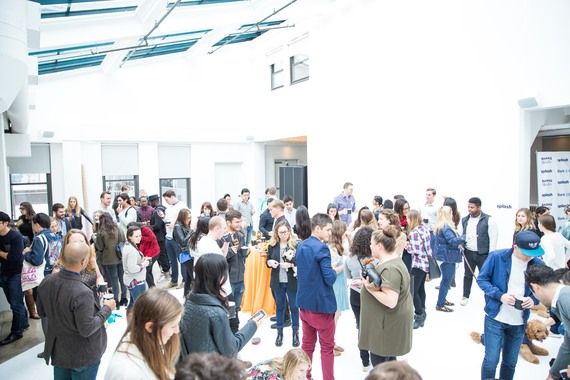I'm just going to say it. Your party venue is too big. Trust me.
It doesn't matter where you're throwing your event -- it's probably too big. In my experience planning and hosting parties, I've never come across an event space too small. In fact, most of the time there's excess space.
Although it may seem counterintuitive, there's plenty of party science behind gathering guests into small spaces. For starters, eventing in an extra-large venue comes with problems to match. Added size results in trickier lighting setups and more expensive decor, not to mention the fact that without appropriate sound equipment, your acoustics may suffer.
But the best argument for hosting a smaller event? Engagement.
With extra-big events, guest intimacy gets lost in the scale, and before you know it, your space starts to sap your party of that intangible buzz you worked so tirelessly to cultivate. Live events are among the few occasions in our culture of smartphones, tablets and noise-cancelling headphones where people have voluntarily signed up to engage meaningfully with other real-life humans. Spreading them out just provides an out clause for communication.
A crowded room not only strokes ego -- it fans FOMO. The other words, we love feeling popular and we hate missing out. The more packed your party seems, the more self-assured your guests will feel. And if you stage spaces smartly, you can build anticipation throughout the duration of the event and encourage exploration and design delight.
The goal is to make your main event feel more like a take-the-back-entrance super-exclusive word-of-mouth after-party. And Bizbash agrees.
Here are some of my time-tested tricks for small-space parties. Try them out. Downsizing is more fun than you think.
Start with the smallest space possible.
Seriously. Go smaller. This guy held a speakeasy in an NYC water tower and people loved it.
Lose the chairs.
Sitting sucks. Unless your event revolves around a guided meditation or a 4-hour film screening, people like to mill about at parties. And people really like to dance. So limit the seating areas to encourage proper flow. And those chairs by the bar? Absolutely never.
Edit the venue as you see fit.
Just because a venue may have seating or lighting or food areas set up in a certain way doesn't mean they can't be changed. The best event planners take suggestions from the venue into consideration but then design their own blueprint.
Can you change the entrance? Place a second bar in a neglected dark corner? Of course you have to operate within the venue constraints, but the best way to know how people will move through the space is to attend another event in that venue before hosting your own. Take notes and then always get to your own event early and make changes as the party gains steam.
Pre-plan for stretch.
When you're setting up, get creative with your lighting, mirrors, and barriers to create the illusion of a designated space. Funneling people towards each other maximizes interaction. If things start feeling a little too cramped, you can expand the space via your moveable barriers which double as human release valves.
Encourage autonomous discovery.
I always like to hide spaces inside a space, so that when your guests inevitably find them, their party experience takes an awesome turn toward the unexpected. By opening closed doors to find a secret dance floor, or pulling back a curtain to find a photobooth, guests take a more active role in their party-going and it allows your event to evolve as the night goes on. You can really only do this successfully by starting small.
Artfully block sight lines.
A space where everyone at your party can see everyone else at your party gets boring really fast. By creating distinct spaces for guests to gather, you give your attendees choices and a richer experience. You can do this by creating "inside" and "outside" areas where directional light from the outside space are focused on guests "inside." Because of the effect, guests inside have a hard time seeing to the outside, but guests on the outside can easily look in. Crafting dynamic physical barriers and layers like this can make your event feel more multi-dimensional.
Oh, and always put a bar near the dance floor. The lines will take care of themselves.
I use these tactics in the Splash offices, whether it's designating spaces via walls of colorful string, or stashing musical instruments in a corner room separated from desks by a set of French doors. And, not surprisingly, all of them are small.
